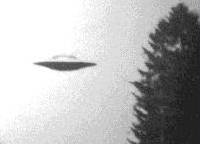Article/Document:
Astrobiologists Find Evidence of Early Life on Land
NASA/Ames press release, January 18, 2001
original source | fair use notice
Summary: Scientists with NASA's Astrobiology Institute have discovered evidence that microbial life emerged on land between 2.6 billion and 2.7 billion years ago, much earlier than previously thought.
Text based on a NASA/Ames press release.
Scientists with NASA's Astrobiology Institute (NAI) have discovered fossilized remnants of microbial mats that developed on land between 2.6 billion and 2.7 billion years ago in the Eastern Transvaal district of South Africa.
This significant discovery presents the strongest evidence to date that life on land occurred at a much earlier stage in Earth's history than was previously believed by most scientists. It also suggests that an ozone shield and an oxygen-rich atmosphere existed on Earth 2.6 billion years ago, both necessary conditions for life on land to emerge. The results are reported in the November 30, 2000, issue of Nature magazine.
"This important investigation undertaken by an NAI team feeds into NASA's strategy of using Earth analogs, particularly analogs present on early Earth, as models for testing the hypothesis that life exists, or has existed, on Mars or elsewhere in the universe," said Dr. Baruch Blumberg (Nobel '76), director of the NAI research consortium. "A major goal of the NAI is to undertake the basic science that is necessary for the performance of NASA and space science missions."
The finding also has other important implications for NASA. " The suggestion that an ozone shield existed as early as 2.6 billion years ago boosts our chances in the search for life on planets orbiting other stars," said Dr. Michael Meyer, astrobiology discipline scientist at NASA Headquarters, Washington, D.C. " Ozone would be easily detectable by the Terrestrial Planet Finder, a planned interferometer mission in NASA's Origins program."
The microbial mats discovered by researchers are composed primarily of cyanobacteria, the principal organisms that generate oxygen from water and atmospheric carbon dioxide using sunlight.
"This discovery is similar to what scientists went through with marine organisms," said Dr. Hiroshi Ohmoto, co-author of the Nature report, a member of the NAI, director of the Astrobiology Research Center and a faculty member in the Department of Geosciences at The Pennsylvania State University. " Once scientists thought no living organisms existed in the Earth's oceans before 500 million years ago. Then they studied the carbonaceous matter in ancient sedimentary rocks deposited in the oceans and found that organisms lived in the oceans at least 3.8 billion years ago," he said.
A variety of geochemical and paleontological data suggests that microorganisms flourished in Earth's oceans at least 3.8 billion years ago, but researchers have been unable to agree on when microorganisms first colonized the land. The oldest undisputed remains of terrestrial organisms are currently 1.2 billion-year-old microfossils discovered in 1994 in Arizona by Dr. Paul Knauth, a member of the NAI-Arizona State University astrobiology team. However, many scientists think the Earth's land surface was sterile until about 500 million years ago, when vesicular plants first appeared.
Ohmoto noted that the organic matter found in South Africa occurred primarily as parallel seams in the ancient 2.6 billion-year-old soil bed. This suggests that the organic seams are remnants of biomats that developed on the soil surface and were trapped while the soil formed. The team discovered the "right" ratios of chemical elements essential for life (carbon, hydrogen, nitrogen and phosphorous) in the carbonaceous matter of the Eastern Transvaal. This provides strong evidence that the carbonaceous matter is of biological rather than abiotic origin, according to Ohmoto.
Read more articles on this topic:






